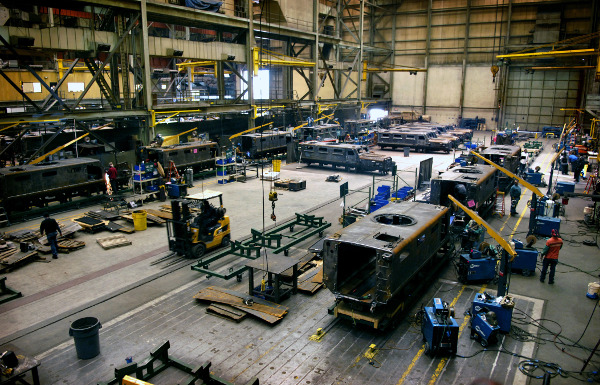AFTER the Balakot airstrikes, the role of weapons in the war strategy is being hotly debated. A major milestone was the downing of Pakistan’s F-16 by India’s vintage MiG-21. Similarly, memorable battles have been fought and won against technological odds in India’s military history. Nevertheless, superior weapons are being emphasised upon for technological preponderance, tactical advantage and overwhelming military strength. Consequently, there are demands for more imports of such weapons. However, while weapons with superior technology and lethality do matter, a cost-effective strategy warrants that in the long term these are domestically produced.
In the past, the necessity for superior weapons through the ‘imports’ gateway has impacted our weapons’ philosophy in several ways. One, two-thirds of the weapons are being imported without enabling sufficient scope for reverse engineering, design changes and qualitative improvements in imported weaponry to suit our requirements and optimise these costly imports.
Two, the imports’ mechanism also leads to distortions in terms of demand-supply mismatches (procuring lesser number of weapons than intended due to prohibitive costs), temporal delays, qualitative (not getting technologically up-front products) and other specification issues. Inspection reports and field trials of imported weapons may not be enough to suit India’s diverse geographical topography.
Three, there are always minor issues related to the procurement and supply of spare parts, maintenance issues, logistical support and operational preparedness. Foreign suppliers often exploit our vulnerability and dependence. Moreover, they are no match for the cost-effective comforts of similar services provided by the domestic military industrial complex (MIC).
If we analyse the economics of weapons’ technology, it becomes clear why India is compelled to perpetually import high-technology weapons. Externally, the producer-supplier countries have the advantage of in-built knowledge over importing countries due to familiarity of turf, ongoing R&D engagement with focus on improvisation of existing weapons and sharing of only ‘need to know’ technical knowledge with importing countries. India remains a victim of such structural defects in the international arms market where the weapons supplier firms and countries see us only as a Big Emerging Market (BEM) rather than a potential arms producer. We do not often get the best of technology and even the sporadic transfer of technology (ToT) is backwards by at least one generation.
Internally, our domestic MIC is small and monopolised by defence PSUs. Unlike other sectors of economy, the defence economy is still regulated with restricted space for independent and autonomous growth of private sector entrepreneurship. The MIC is also characterised by the bureaucratisation of defence R&D, low salaries for the scientific fraternity and the absence of institutional linkages with the industry and services. While the investment in defence R&D is fairly good, overall investments in scientific education and R&D remain poor. Constrained economic conditions also mean little investments in the promotion of generic R&D. We can boast of very few universities and research institutes with top-class scientific research activities. These issues have repercussions through poor R&D culture, fewer number of patents and products and internationally cited research papers.
While we are on the cusp of joining the great power club, the technical edifice of our military power projection is shaky. For futuristic wars, we need plenty of front-end technology to remain confident in a tech-propelled warfare environment. Can we really import all the technologies in appropriate quantity and at the appropriate time? Further, can we really afford to pay through our nose since imported technologies extract a heavy price for patent development? Most importantly, can we really become a military power through large-scale weapon imports? We need to meditate on this. Unless we gear up, we would perpetuate our technological dependency on the international market, and in turn, our vulnerability would remain in situ.
The weaponry challenge for India is manifold. One, we need technological parity with China that has invested heavily in basic sciences’ education and research and has gone miles ahead in the past four decades vis-a-vis our own negligent treatment of scientific disciplines. Two, we cannot afford numerical preponderance along with technological preponderance. The extra flab in services can be trimmed; money saved can be invested in technology. Concurrently, the force profile needs an incremental change with technical skills and knowledge to all arms of the services, including the infantry. Three, better civil-military synergy would lead to weapons being developed with lesser integration and adaptation problems and greater acceptability among the services. Every year, thousands of engineering and technical-background officers and men retire. They could be laterally deployed in the domestic MIC. This would enable better user specifications and responsive designs and may lead to an innovative technology and weapon culture as exists in countries like Israel.
The Balakot aftermath provides an opportunity to explore our technological prowess.
We have political will through the ‘Make in India’ scheme and an implementational roadmap through the two upcoming Defence Industrial Corridors (DICs). We also have an assured domestic market. Most importantly, we have relative peace on our borders.
We should use this scenario to strategise long-term and medium-term options. Minimal import philosophy, preference ordering, strong techno-nationalism, building our defence and offence capabilities through augmenting our strong areas (like missile systems) are some of the representative solutions. Most importantly, we need to make heavy investments in scientific education and research. Probably, there lies the potential for India’s emergence as a true military power.
Source:TI
Image Courtesy:Swarajya
You may also like
-
IAF Aircraft Set Course For Exercise Eastern Bridge VII At Oman
-
IAF Set To Host The Indian Defence Aviation Exposition-II At Jodhpur
-
Defence Secretary to co-chair 5th India-Philippines Joint Defence Cooperation Committee meeting in Manila
-
Simultaneous Launch Of ‘malpe And Mulki’, Fourth And Fifth Ships Of Asw Swc (Csl) Project
-
Aatmanirbharta in Defence: MoD signs Contract with HAL for 240 AL-31FP Aero Engines for Su-30MKI Aircraft
